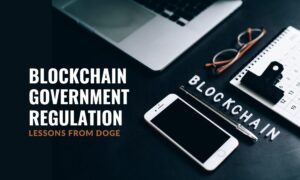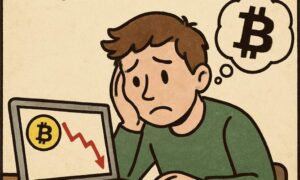Introduction
In a world marked by diversity and complexity, the concept of human rights stands as a beacon of fundamental principles that aim to safeguard the dignity and well-being of every individual. This blog article will delve into the multifaceted realm of human rights, elucidating their definition, historical context, and contemporary significance. Through an exploration of real-life examples, we will highlight the practical application of these rights and their pivotal role in shaping a just and equitable society.
What is Human Rights?
Human rights refer to the inherent rights and freedoms every individual possesses by virtue of being human. These rights are universal, inalienable, and indivisible, forming the cornerstone of a just and inclusive society. The recognition of human rights transcends geographical, cultural, and political boundaries, emphasizing the shared responsibility of all nations to uphold these principles.
A. Historical Evolution of Human Rights
To comprehend the concept of human rights, it is essential to trace their historical evolution. The roots of human rights can be found in ancient philosophical and religious texts, where ideas of justice, equality, and dignity were articulated. However, the modern human rights framework gained prominence in the aftermath of World War II with the adoption of the Universal Declaration of Human Rights (UDHR) by the United Nations in 1948.
The UDHR, serving as a foundational document, outlines a comprehensive list of civil, political, economic, social, and cultural rights that all individuals are entitled to. Subsequent international treaties and conventions have further expanded and refined these rights, contributing to the development of an extensive human rights framework.
Core Principles of Human Rights
Human rights are grounded in several core principles that guide their interpretation and implementation. Understanding these principles is crucial for appreciating the depth and breadth of human rights protections.
A. Universality
The principle of universality asserts that human rights are applicable to all individuals, regardless of their nationality, ethnicity, religion, gender, or any other characteristic. Every person is inherently entitled to the same set of rights, fostering a global commitment to their protection.
B. Inalienability
Human rights are inalienable, meaning they cannot be surrendered, transferred, or revoked under any circumstances. Regardless of legal or political considerations, individuals retain their fundamental rights, reinforcing the inherent and non-negotiable nature of these entitlements.
C. Indivisibility
Human rights are indivisible, recognizing that civil, political, economic, social, and cultural rights are interconnected and interdependent. Neglecting one category of rights can undermine the overall well-being and dignity of individuals, necessitating a holistic approach to their protection.
Examples of Human Rights in Action
To elucidate the practical application of human rights, let us explore real-life examples that exemplify the protection and violation of specific rights.
A. Right to Life: Rohingya Crisis
The Rohingya crisis in Myanmar serves as a poignant example of the violation of the right to life. The Rohingya, a Muslim minority group, has faced systematic persecution, including violence, displacement, and denial of basic necessities. The international community has condemned these atrocities as a gross violation of the right to life, emphasizing the urgency of addressing such humanitarian crises.
B. Freedom of Expression: Journalistic Freedom
Freedom of expression is a cornerstone of democracy, allowing individuals to voice their opinions and hold those in power accountable. However, in many countries, journalists face censorship, harassment, and imprisonment for reporting on sensitive issues. Highlighting these cases sheds light on the critical importance of preserving journalistic freedom as an integral component of human rights protection.
C. Right to Education: Malala Yousafzai
Malala Yousafzai’s story exemplifies the transformative power of education and the resilience of individuals in the face of adversity. Malala, a Pakistani activist, was targeted by the Taliban for advocating girls’ education. Despite being shot, she continued her advocacy and became a global symbol of the right to education for all, particularly for girls in regions facing gender-based discrimination.
D. Right to Work: Modern Slavery
The right to work encompasses not only the freedom to choose one’s employment but also protection against exploitative and forced labor. Instances of modern slavery, including human trafficking and forced labor in various industries, underscore the ongoing challenges of upholding the right to work. Combating these practices requires concerted efforts at the national and international levels.
Contemporary Challenges to Human Rights
While progress has been made in the recognition and protection of human rights, numerous challenges persist in the contemporary world. Addressing these challenges is crucial for ensuring the continued relevance and effectiveness of the human rights framework.
A. Emerging Technologies and Privacy
Advancements in technology, while offering unprecedented opportunities, also pose challenges to the right to privacy. Surveillance technologies, data breaches, and the exploitation of personal information underscore the need for robust legal frameworks and ethical considerations to protect individuals from unwarranted intrusions.
B. Climate Change and Environmental Rights
The adverse impacts of climate change pose a direct threat to the enjoyment of human rights, particularly for vulnerable communities. Rising sea levels, extreme weather events, and environmental degradation disproportionately affect marginalized populations, necessitating a rights-based approach to climate action and environmental protection.
C. Global Health Crises and the Right to Health
The COVID-19 pandemic has highlighted the interconnectedness of public health and human rights. Access to healthcare, equitable vaccine distribution, and the protection of vulnerable populations are essential components of upholding the right to health. International cooperation and solidarity are paramount in addressing global health challenges while respecting human rights principles.
The Role of Individuals and Organizations in Promoting Human Rights
Realizing the full potential of human rights requires collective action from individuals, civil society organizations, and governments. Understanding how individuals and organizations can contribute to the promotion and protection of human rights is essential for fostering a culture of respect and accountability.
A. Advocacy and Awareness
Raising awareness about human rights issues is a critical step in advocating for positive change. Individuals and organizations can leverage social media, educational initiatives, and community outreach to shed light on human rights violations and promote a culture of respect for fundamental freedoms.
B. Legal Advocacy and Accountability
Legal advocacy plays a pivotal role in holding governments and other entities accountable for human rights violations. Individuals and organizations can collaborate with legal experts, human rights defenders, and international bodies to pursue justice and ensure accountability for those responsible for human rights abuses.
C. Grassroots Initiatives and Empowerment
Empowering local communities through grassroots initiatives is key to addressing systemic issues and promoting sustainable change. Projects focused on education, economic empowerment, and community development contribute to the realization of human rights at the local level.
Conclusion
Human rights are the bedrock of a just and equitable society, offering a framework to safeguard the inherent dignity and well-being of every individual. Through an exploration of their historical evolution, core principles, real-life examples, and contemporary challenges, we have gained insights into the multifaceted nature of human rights.
As we navigate the complexities of the modern world, it is imperative that individuals, organizations, and governments remain committed to upholding and advancing human rights. By understanding the practical implications of human rights violations and actively contributing to their promotion, we can collectively work towards building a world where the rights and freedoms of every individual are respected, protected, and fulfilled.



































